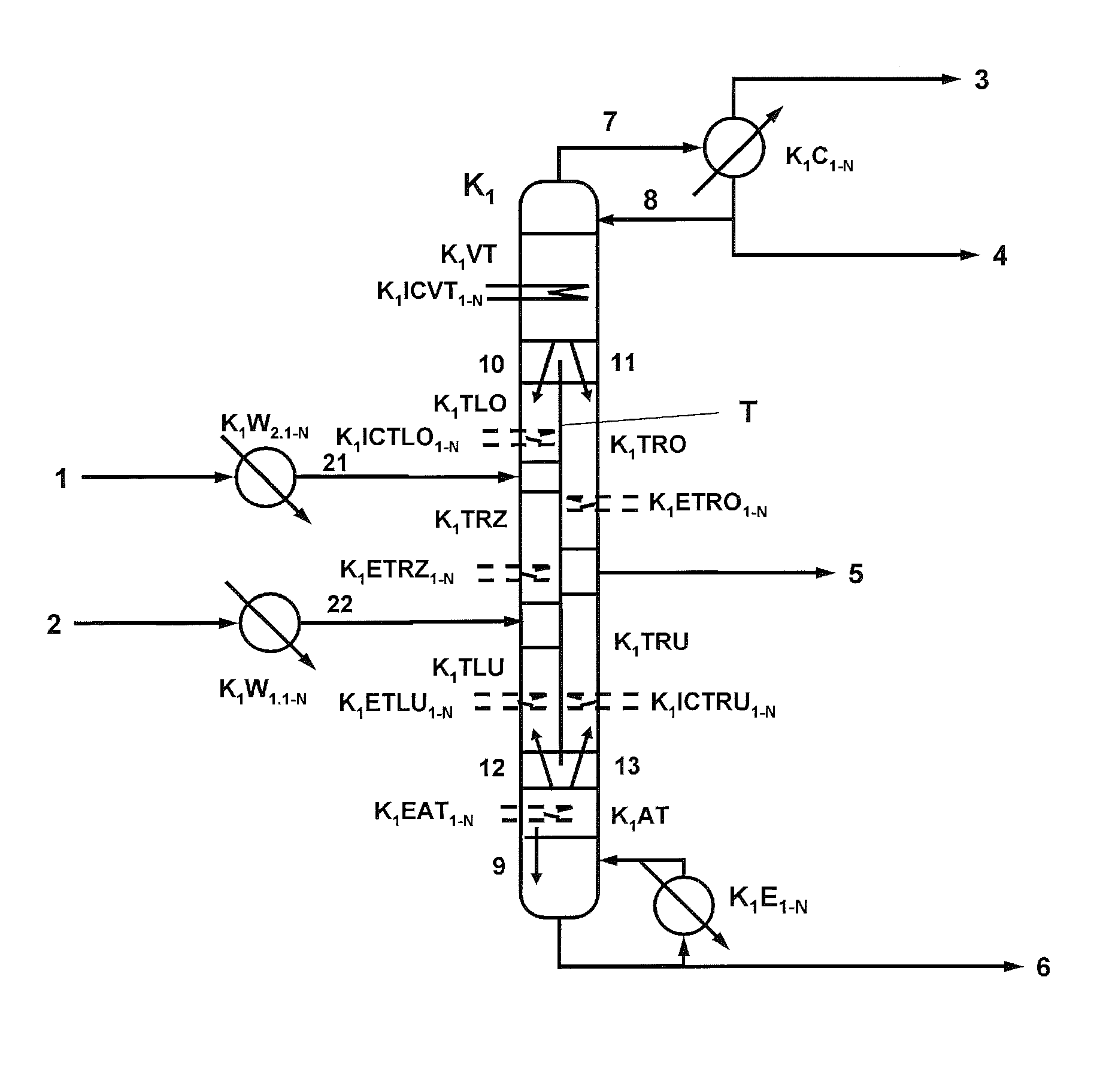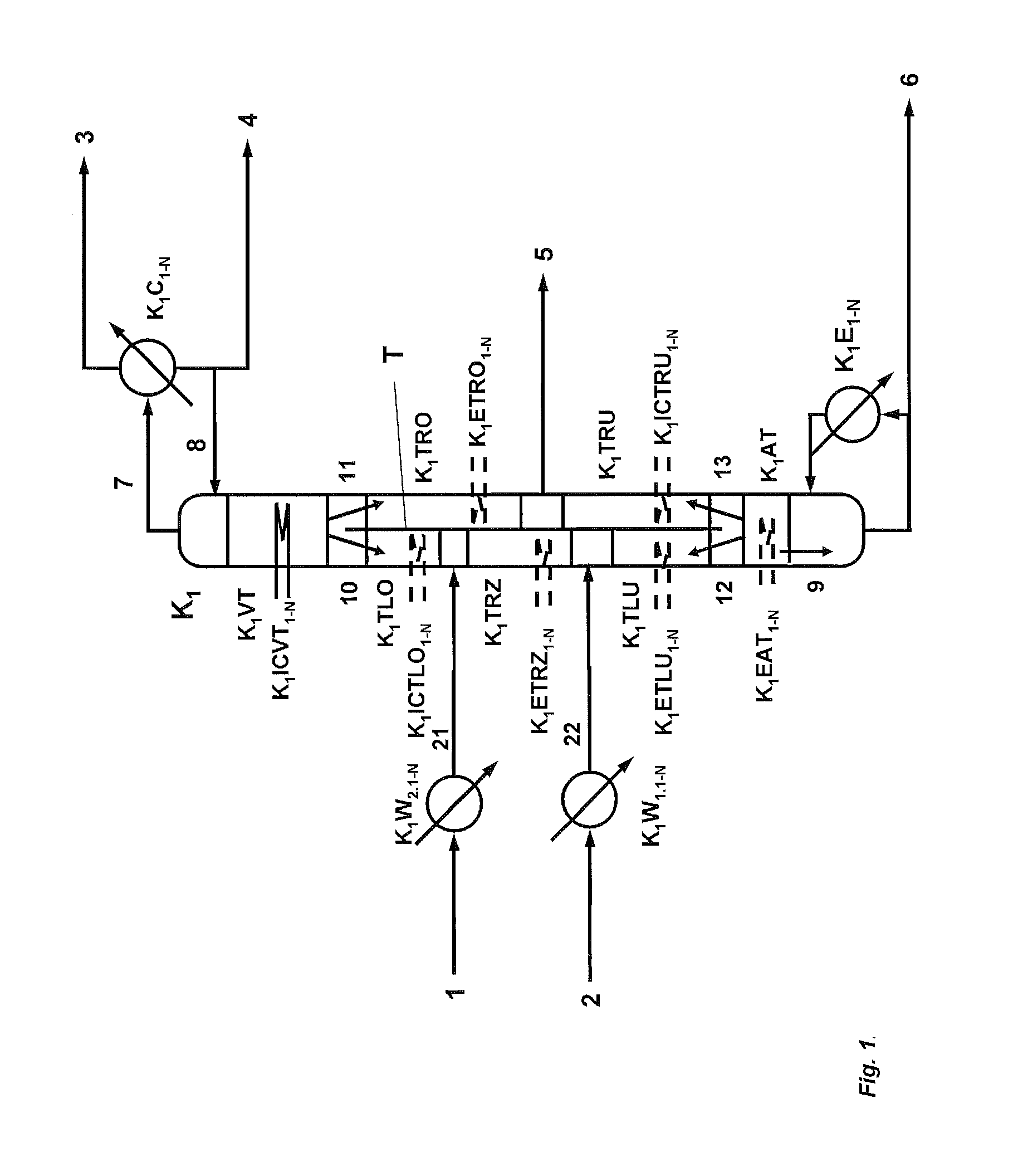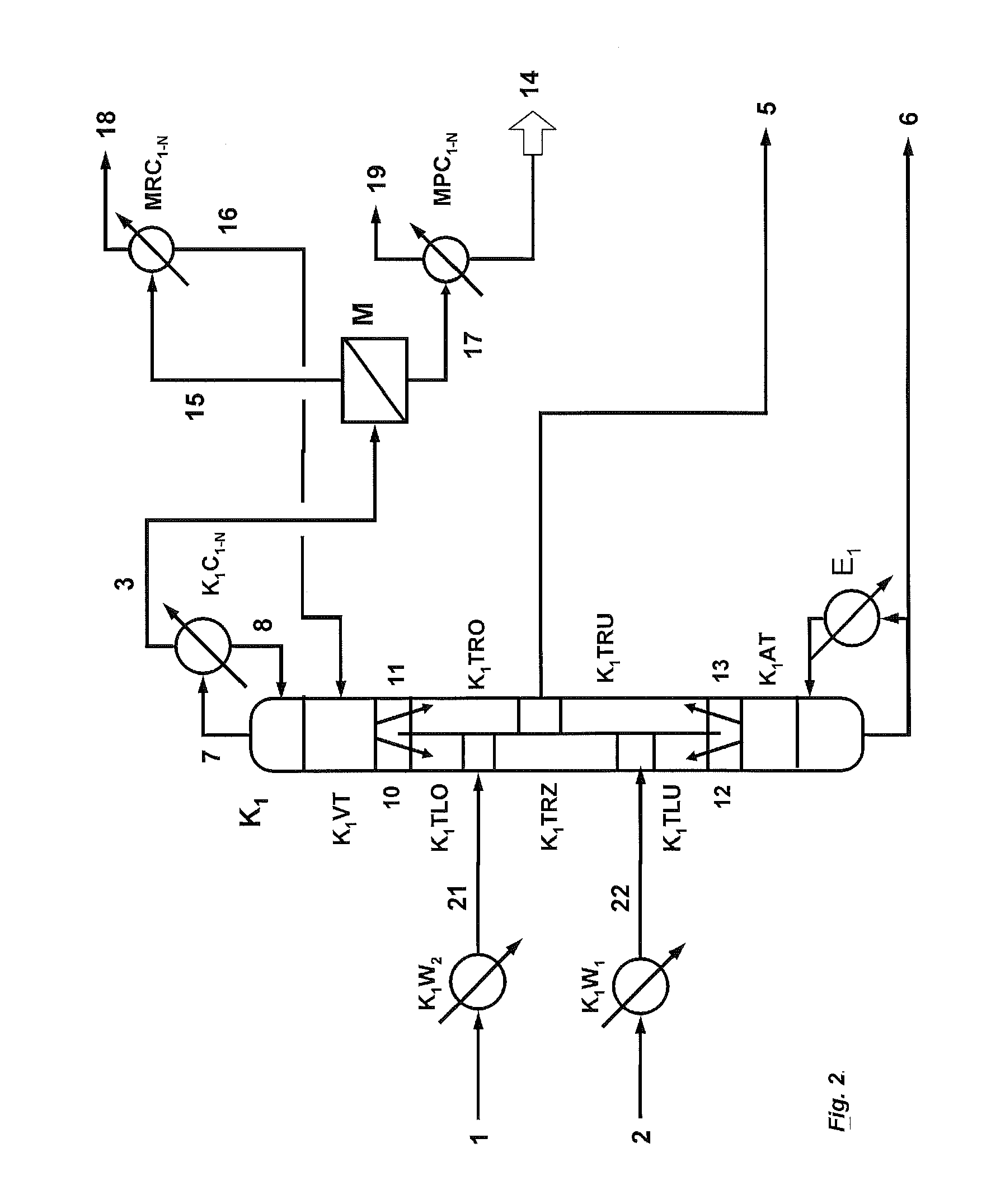Process for preparing diaryl carbonates or alkyl aryl carbonates from dialkyl carbonates
a technology of dialkyl carbonates and diaryl carbonates, which is applied in the field of process for preparing diaryl carbonates and/or alkyl aryl carbonates from dialkyl carbonates and aromatic hydroxy compounds, can solve the problems of inability to meet the requirements of the above-described process in terms of material and energy, and the advantages of phosgene-free preparation of aryl carbonates are questionable from an ecological and economic point of view
- Summary
- Abstract
- Description
- Claims
- Application Information
AI Technical Summary
Problems solved by technology
Method used
Image
Examples
example 1
[0190]396.9 kg / h of a mixture (21) comprising 85.91% by weight of phenol, 9.32% by weight of dimethyl carbonate, 3.22% by weight of diphenyl carbonate, 1.55% by weight of titanium tetraphenoxide are fed to a reactive dividing wall column (K1) comprising an enrichment section (K1VT) having 19 theoretical plates, a stripping section (K1AT) having 9 theoretical plates, a dividing wall which divides the column between enrichment section and stripping section into a feed side and an offtake side, an upper section on the feed side (K1LO) having 10 theoretical plates, a reaction zone (K1TRZ) on the feed side of the dividing wall having 30 reaction trays (holdup / tray: 12 l), a further section on the feed side (K1LU) below the reaction zone having 10 theoretical plates, an upper section on the offtake side (K1RO) above the side stream offtake (5) having 15 theoretical plates, a lower section on the offtake side (K1RU) below the side stream offtake (5) having 15 theoretical plates and a strip...
example 2
[0198]The same reactive dividing wall column as described in Example 1 is used. 396.9 kg / h of a mixture (21) comprising 85.91% by weight of phenol, 9.32% by weight of dimethyl carbonate, 3.22% by weight of diphenyl carbonate, 1.55% by weight of titanium tetraphenoxide are fed in at the upper end of the reaction zone (K1TRZ).
[0199]312.9 kg / h of a vapour mixture (22) which comprises 86.1% by weight of dimethyl carbonate, 13.7% by weight of phenol and 0.2% by weight of methanol and has been superheated by 10° C. are fed in at the lower end of the reaction zone (K1RZ).
[0200]The reactive dividing wall column is operated at a pressure at the top of 3.6 bar (absolute) and a reflux ratio of 14.2.
[0201]37% (202 kg / h) of the liquid (10) running down from the enrichment section are fed to the upper section of the feed side (K1TLO). The remaining liquid (11) is fed in at the upper end of the offtake side (K1TRO).
[0202]A temperature of 230° C. is set in the bottom of the column, with a kettle-ty...
example 3
[0208]The same reactive dividing wall column as described in Examples 1 and 2 is used. 396.9 kg / h of a mixture (21) comprising 85.91% by weight of phenol, 9.32% by weight of dimethyl carbonate, 3.22% by weight of diphenyl carbonate, 1.55% by weight of titanium tetraphenoxide are fed in at the upper end of the reaction zone (K1TRZ).
[0209]386.2 kg / h of a vapour mixture (22) which comprises 89.6% by weight of dimethyl carbonate, 10.2% by weight of phenol and 0.2% by weight of methanol and has been superheated by 10° C. are fed in at the lower end of the reaction zone (K1RZ).
[0210]The reactive dividing wall column is operated at a pressure at the top of 3.6 bar (absolute) and a reflux ratio of 10.4.
[0211]37% (258.2 kg / h) of the liquid (10) running down from the enrichment section are fed to the upper section of the feed side (K1TLO). The remaining liquid (11) is fed in at the upper end of the offtake side (K1TRO).
[0212]A temperature of 230° C. is set in the bottom of the column, with a ...
PUM
| Property | Measurement | Unit |
|---|---|---|
| pressure | aaaaa | aaaaa |
| temperature | aaaaa | aaaaa |
| boiling fractions | aaaaa | aaaaa |
Abstract
Description
Claims
Application Information
 Login to View More
Login to View More - R&D
- Intellectual Property
- Life Sciences
- Materials
- Tech Scout
- Unparalleled Data Quality
- Higher Quality Content
- 60% Fewer Hallucinations
Browse by: Latest US Patents, China's latest patents, Technical Efficacy Thesaurus, Application Domain, Technology Topic, Popular Technical Reports.
© 2025 PatSnap. All rights reserved.Legal|Privacy policy|Modern Slavery Act Transparency Statement|Sitemap|About US| Contact US: help@patsnap.com



